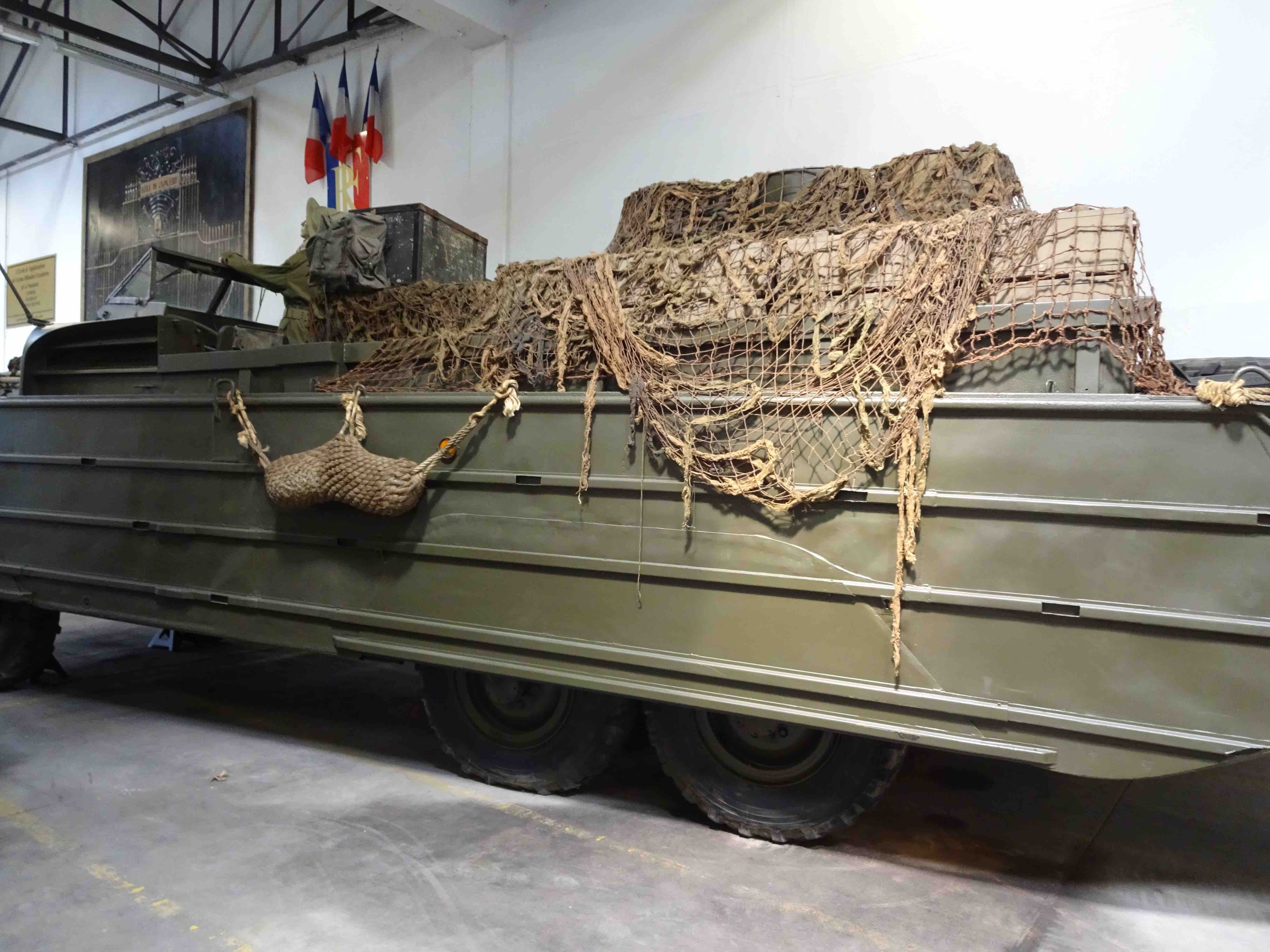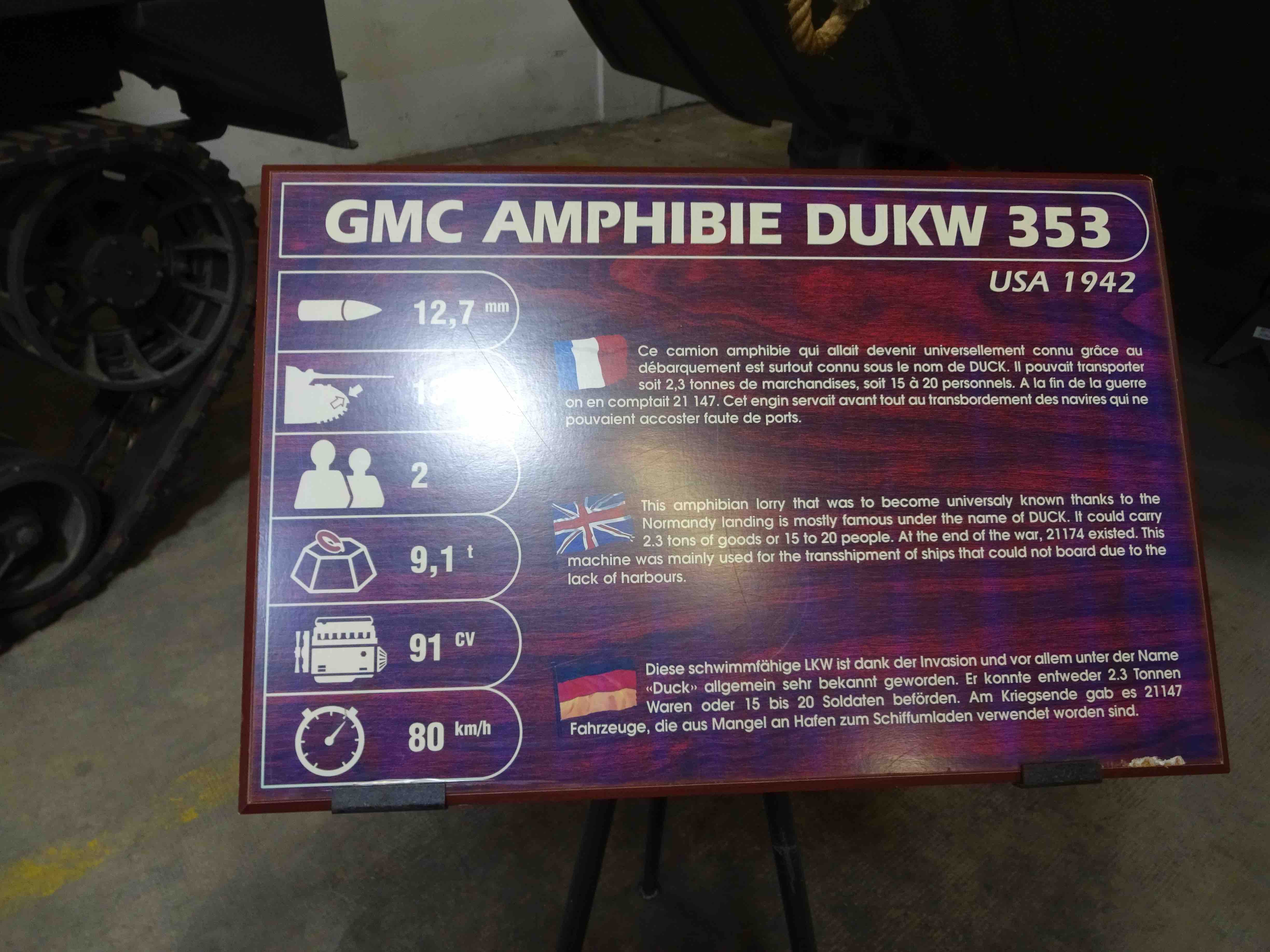GMC Amphibious DUKW 353
Details:
This GMC Amphibious DUKW 353 is located in the room called "Les Alliés Seconde Guerre mondiale" (The Allies during the Second World War) in the back of the museum. Combat Vehicle The United States Army ordered an amphibious vehicle in April 1942. Together with Naval architects, GMC designed what would become the DUKW 353 and production began in November of that same year. One particularly notable feature of the DUCK was that it allowed the driver to control tire pressure from the cabin; this capability eased the transition from sand to paved surfaces. While the DUCK may be synonymous with the Normandy landing, they were first deployed in the Pacific for the invasion of Noumeau (the present-day capital of New Caledonia). A large portion of the early DUCK's were used for the invasion of North Africa and eventually Italy. After the DUCK earned its iconic image in Normandy, it was a crucial tool for Allied troops as it allowed them to transport men and goods across the Rhine river. Today, DUCK's are frequently used as tour vehicles or for water safety.
Monument Text:
"This amphibious lorry that was to become universaly known thanks to the Normandy landing is mostly famous under the name of DUCK. It could carry 2.3 tons of goods or 15 to 20 people. At the end of the war, 21174 existed. This machine was mainly used for transshipment of ships that could not board due to the lack of harbors."


